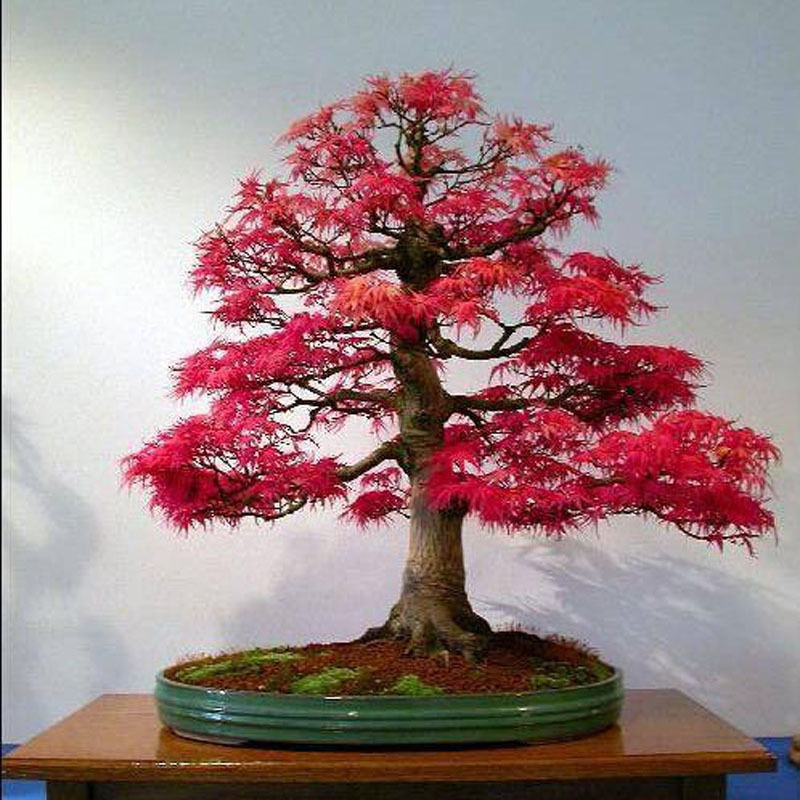
:max_bytes(150000):strip_icc()/Bonsai-Japanese-Maple_GettyImages-482617609-6cd85951c9a7485cabe46413262dc31a.jpg)
If your Bonsai is receiving full sun, it may be necessary to water once a day. Apply water when the soil appears dry - never allow the soil to become completely dry. The watering of your Bonsai must never be neglected. Your Bonsai should not remain inside for more than a few days at a time, as the atmosphere is detrimental to the health of your tree. A Bonsai can and should be brought into the house on special occasions and displayed in a prominent place. A Bonsai can be viewed best when it is placed approximately three to four feet high (eye level), such as on a table, wall or bench. Once outside, your Bonsai should be positioned where it will receive sufficient sun – morning sun and afternoon shade is best. Throughout the spring, summer and fall your Bonsai should be placed outside, such as on a patio, balcony, terrace, or in a garden. During this time, your tree does not require light because it is in a dormant state however, it will require watering approximately every two weeks. A second method which is also common is to place your tree(s) in an unheated garage or shed. It is best to choose a location that is protected from wind and sun, but not rain or snow. One method is to bury your tree in the ground (preferably without the pot) up to the rim of the container and then mulch up to the first branch. This can be accomplished in several ways.

As a guide, around Thanksgiving Day it is time to prepare your Bonsai for its winter dormancy period which should last approximately three (3) months. Just the basics and, therefore, we recommend that you purchase one of the manyĪ Japanese Red Maple Bonsai is a living miniature tree and not a house plant therefore, your bonsai must be maintained in a cool/cold environment during the winter season. Increase in beauty as it matures through the years. Since your bonsai is a living miniature tree, it will With proper care, your bonsai will remain healthy, beautiful and miniatureįor many years to come. BonsaiĪre grown in pots and are totally dependent on you for their care. Its origin in Japan and China where it has been practiced for centuries.
#RED MAPLE BONSAI HOW TO#
How To Take Proper Care Of Your Bonsai Treeīonsai is the reproduction of natural tree forms in miniature. They are a popular choice for bonsai enthusiasts and have long been a subject in art. For centuries Japanese horticulturalists have developed cultivars from maples found in Japan and nearby Korea and China. He gave it the species name palmatum after the hand-like shape of its leaves. When Swedish doctor-botanist Carl Peter Thunberg traveled in Japan late in the eighteenth century, he secreted out drawings of a small tree that would eventually become synonymous with the high art of oriental gardens. The first specimen of the tree reached England in 1820.

The Japanese Red Maple has been cultivated in Japan for centuries and in temperate areas around the world since the 1800s.

Small reddish-purple flowers will appear in May-June. A deciduous tree, The Japanese Maple will lose some or all of its leaves during the winter. The leaves of the Japanese Red Maple are purplish-red becoming green in late summer and are deeply lobed. JAPANESE RED MAPLE (acer palmatum - atropurpurea)


 0 kommentar(er)
0 kommentar(er)
